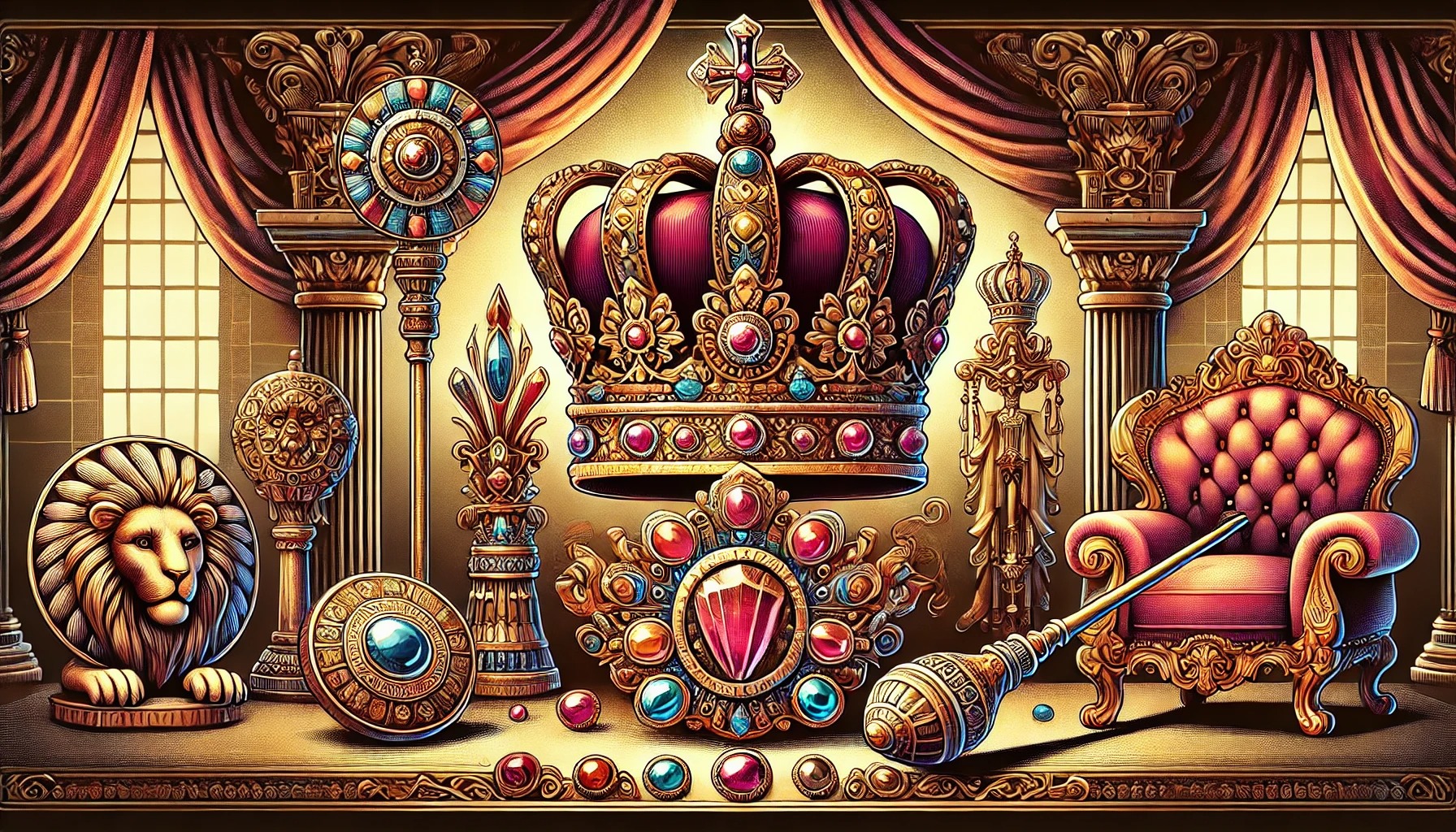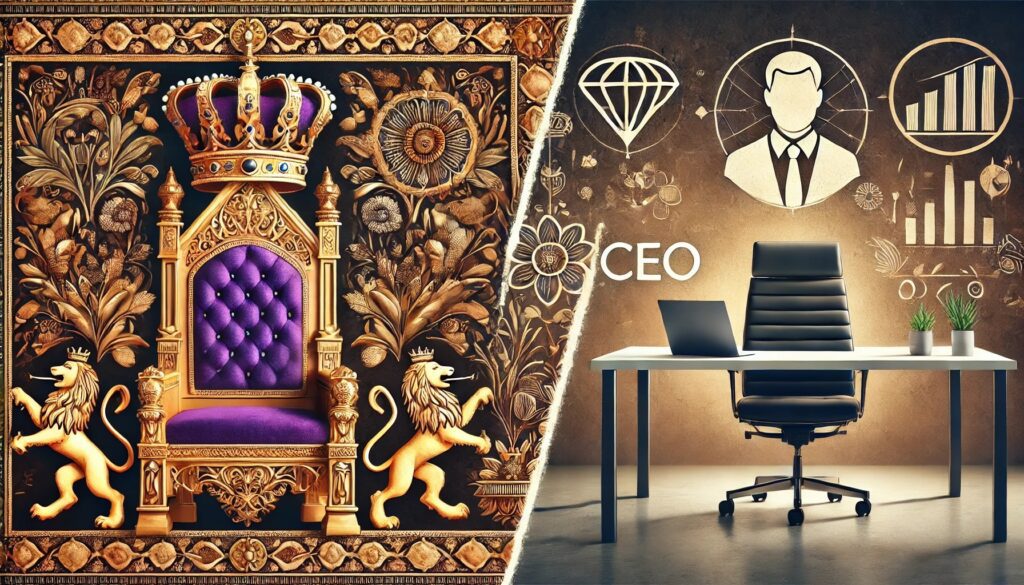The Power of Leadership Symbols: Beyond Tradition and Into Modern Influence
Leadership symbols have been a part of human history for centuries, representing power, authority, and influence. From the majestic crowns worn by monarchs to the subtle personal branding in modern corporate leadership, symbols have always had a psychological impact on how leaders are perceived. This article will explore how leadership symbols have evolved and their ongoing importance in today’s world.
Historical Evolution of Leadership Symbols
Throughout history, leaders have relied on symbols to signify their authority. In ancient civilizations, such as Egypt and Rome, symbols like crowns and scepters were not just decorative items—they embodied the divine right to rule. These symbols represented not only leadership but also the perceived connection between rulers and the gods.
- Crown – Worn by kings and queens, symbolizing ultimate power.
- Scepter – A staff held by rulers, representing governance.
- Throne – A symbol of leadership and authority, particularly in monarchies.
These symbols, once limited to royal leadership, have found their way into other aspects of life. Modern leadership in politics and business still utilizes symbols of power, though in different forms, such as titles, logos, and even office layouts.
| Historical Symbol | Modern Equivalent |
|---|---|
| Crown | CEO Title |
| Scepter | Company Logo |
| Throne | Executive Office |
Tip: Even in modern times, leaders use symbols to project their power, whether it’s a physical object or an intangible title.
The Psychology Behind Leadership Symbols
Leadership symbols are more than just status markers; they tap into our subconscious. Studies in psychology show that symbols like crowns, scepters, and uniforms trigger a sense of authority in the minds of followers. This is often referred to as the “authority bias,” where people are more likely to trust or follow someone who displays certain symbols of leadership.
- Authority Bias – People tend to respect those who display symbols of leadership, like uniforms or titles.
- Power Distance – Symbols create a psychological distance, reinforcing the hierarchy between leaders and followers.
Take the example of a judge wearing a robe and wielding a gavel. These are not just items of clothing or tools; they are symbols that communicate justice, fairness, and authority. The same can be said for business leaders whose company logos or corner offices symbolize their leadership status.
Tip: The next time you see a uniform, think about how it makes you feel and what it symbolizes about the person’s authority.

Cultural Interpretations of Leadership Symbols
Across the globe, different cultures assign unique meanings to leadership symbols. While the Western world often equates crowns and thrones with leadership, Eastern cultures may focus on symbols like the dragon or lotus flower. These variations highlight the diversity in how leadership is perceived and communicated.
In Chinese culture, the dragon is revered as a symbol of strength and wisdom. Leaders who are associated with the dragon are believed to possess these traits, guiding their people with both power and intellect. On the other hand, in Indian culture, the lotus flower symbolizes purity and enlightenment, traits that are equally important in spiritual and political leadership.
| Culture | Symbol | Meaning |
|---|---|---|
| China | Dragon | Strength, Wisdom |
| India | Lotus Flower | Purity, Enlightenment |
| Japan | Samurai Sword | Honor, Duty |
| Egypt | Ankh | Eternal Life, Power |
| Greece | Olive Branch | Peace, Leadership |
| Native American | Feather Headdress | Courage, Wisdom |
| Roman Empire | Eagle | Strength, Leadership |
| Western Culture | Gavel | Authority, Justice |
Understanding these cultural interpretations is crucial for global leadership. A symbol of authority in one culture may hold a completely different meaning in another, potentially leading to miscommunication or misunderstandings.
Invisible Symbols: Actions as Leadership Symbols
While physical symbols like crowns or gavels hold a clear and visible message, actions can serve as equally powerful symbols of leadership. A leader’s behavior often speaks louder than material symbols, and these actions can leave a lasting legacy.
Consider leaders such as Nelson Mandela or Mahatma Gandhi, whose actions symbolized peace, resilience, and moral leadership. Their refusal to use violence and their commitment to justice became lasting symbols of what strong leadership looks like, far beyond any physical emblem they could have worn.
“In the end, it’s not the crown or the throne that makes a leader, but the actions they take for their people.”
These invisible leadership symbols—actions—are important in everyday leadership as well. Whether it’s fostering an open and supportive work environment, championing transparency, or standing by one’s values during difficult times, these actions are powerful indicators of true leadership.
- Transparency – A leader who openly communicates with their team establishes trust and confidence.
- Resilience – In the face of challenges, a leader’s calm and steady approach becomes a symbol of strength.
- Empathy – Compassionate leadership can become a symbol of care and human connection in a business setting.
TIP: Leaders should focus not only on the symbols they project but also on the actions that embody their values, as these actions often become their most powerful symbols.
List of Leadership Symbols and Their Meanings
Leadership is often defined by symbols that encapsulate different aspects of authority, power, and guidance. Below is an expanded list of leadership symbols, their meanings, and how they have come to represent various qualities in leaders.
- Crown – The crown has long been a symbol of authority and power, particularly in monarchies. It signifies the wearer’s right to rule, often perceived as being granted by divine forces. In modern contexts, the crown symbolizes ultimate authority and leadership, representing a leader’s responsibility to guide and protect their followers.
- Scepter – A scepter is a ceremonial staff held by a ruler as a sign of sovereignty and governance. It represents the control and power the leader wields, whether that be in a kingdom, an organization, or any other hierarchical structure. In modern leadership, a scepter can be seen metaphorically as the tools or systems leaders use to manage their teams.
- Gavel – The gavel is primarily associated with judicial leadership, representing justice, authority, and decision-making. Judges use it to symbolize their power to enforce laws, while in corporate settings, it can signify a leader’s ability to make authoritative decisions that steer the course of a company.
- Lion – Often depicted in coats of arms and national symbols, the lion represents courage, strength, and leadership. As the “king of the jungle,” the lion is a symbol of dominance, bravery, and the ability to lead with both power and wisdom. In leadership, being “lion-hearted” is seen as possessing the fortitude to face challenges head-on.
- Eagle – The eagle represents vision, strength, and a broader perspective. Its ability to soar high above the earth and see far distances symbolizes a leader’s ability to have a far-reaching vision, guiding their followers with clarity and focus. In both military and national contexts, the eagle is seen as a protector and a leader of high moral standing.
- Staff – In spiritual and political leadership, the staff symbolizes guidance and protection. Figures like Moses are often depicted with staffs, leading their people through challenging times. Modern leadership can draw parallels, with the staff representing a leader’s role in guiding and supporting their team, often through complex or uncertain circumstances.
- Olive Branch – An ancient symbol of peace, the olive branch is associated with diplomatic leadership. It represents the ability to negotiate, mediate, and lead peacefully, often through conflict or difficult negotiations. In leadership, offering the “olive branch” is a sign of goodwill and reconciliation.
- Scales of Justice – The scales are a universal symbol of fairness, balance, and ethical leadership. They represent the importance of justice in leadership, particularly in legal and corporate environments. Leaders who uphold the values of fairness and equality are often symbolized by the scales.
- Handshake – A handshake is a powerful symbol of unity, partnership, and mutual respect. It signifies trust and agreement between parties. In leadership, the handshake symbolizes a leader’s ability to bring people together, foster alliances, and build trust.
- Torch – The torch symbolizes enlightenment, knowledge, and progress. Leaders who “carry the torch” are seen as guiding their people forward, often through dark or challenging times. It’s a common symbol in education and leadership, highlighting the importance of leaders who illuminate the path for others.
- Throne – A throne represents ultimate authority and leadership, particularly in royal and historical contexts. Sitting on a throne symbolizes that the leader has control and governance over their realm, be it a country or an organization. In modern times, it can metaphorically represent the executive office or a position of high authority within an organization.
- Ship’s Wheel – A ship’s wheel is a symbol of navigation and guidance. Leaders who are depicted with a ship’s wheel are often seen as capable of steering their organization or team through difficult waters. This symbol represents the ability to make wise decisions, particularly in times of uncertainty.
- Keys – The symbol of keys often represents control and leadership, particularly over access to power or knowledge. Leaders who hold the “keys” are seen as gatekeepers, responsible for unlocking opportunities or safeguarding valuable resources. In religious and political contexts, keys symbolize authority and the ability to open new doors.

How to Create Your Own Leadership Symbol
In today’s world, leaders are not confined to historical symbols of authority. Creating your own leadership symbol can be a powerful way to communicate your values, vision, and style. Whether it’s through personal branding, specific rituals, or visual markers, leaders can develop symbols that resonate with their team and the public.
Here are some steps to help you create a personal leadership symbol:
- Define Your Core Values – Think about the principles that guide you as a leader. Are you driven by innovation, fairness, empathy, or strength? Identifying your core values will help you decide which symbol best represents your leadership.
- Choose a Visual Marker – Visual symbols can include everything from logos to colors and personal attire. For example, Steve Jobs’ black turtleneck became a symbol of his innovative and minimalist approach to leadership.
- Create Rituals – Actions can also become symbols. Leaders who are known for regular practices—like hosting weekly open forums or being the first to arrive at work—create a powerful symbolic message through their consistent behavior.
- Be Consistent – Whatever symbol you choose, consistency is key. Over time, people will begin to associate your symbol with your leadership style, so ensure that it aligns with the image you want to project.
Leaders today have the unique opportunity to create symbols that go beyond traditional markers of power. By aligning your personal leadership symbol with your values, you can communicate your vision more effectively and inspire your team to follow your lead.

The Future of Leadership Symbols: Tech, AI, and Beyond
As the world becomes more digital and interconnected, leadership symbols are evolving. Technology is introducing new ways to signal leadership, and AI is changing the landscape of how leadership is perceived.
In the future, virtual reality (VR) and augmented reality (AR) could offer new leadership symbols in digital spaces. Leaders may adopt avatars or digital representations that symbolize their role and authority in virtual meetings or across global teams. Similarly, tech-based uniforms, such as wearable technology, could become symbols of authority in highly advanced fields like space exploration or AI-driven industries.
AI Assistants could also become leadership symbols, where an AI tool represents the decision-making prowess and efficiency of a leader. These AI-driven tools may become as essential to leadership as physical symbols were in ancient times.
“The future of leadership symbols lies not just in the physical world, but in the digital realm, where innovation and connectivity are the new symbols of power.” – Tech Leadership Journal
As technology continues to advance, leaders will need to stay ahead of these trends and be open to new symbols that represent their evolving roles in the modern world.
Conclusion: The Enduring Importance of Leadership Symbols
Whether visible or invisible, traditional or modern, leadership symbols play a crucial role in shaping how leaders are perceived and how they influence others. From ancient crowns and scepters to modern personal branding and actions, these symbols communicate authority, values, and vision.
As a leader, it is essential to be mindful of the symbols you create or adopt, as they will shape your legacy and impact. In a world that is constantly changing, the ability to adapt and innovate while holding onto your core symbols will define successful leadership in the years to come.
Frequently Asked Questions
What are the most recognized symbols of leadership in modern business?
Modern leadership symbols include personal branding, executive titles, corporate logos, and even unique attire that represents authority, such as minimalist or casual styles in tech industries.
How do leadership symbols vary across different cultures?
Symbols of leadership can differ widely. For example, in Eastern cultures, the dragon or lotus flower symbolizes wisdom and purity, while in Western cultures, symbols like the crown or gavel represent authority and justice.
What actions can serve as symbolic of leadership?
Actions such as transparency, empathy, and resilience can serve as leadership symbols, showcasing the leader’s values through their behavior.
What future trends might impact leadership symbols?
Future trends include digital and AI-driven symbols, such as virtual avatars, wearable tech, and AI assistants that could represent authority and efficiency in the digital age.
How can I create a personal leadership symbol that reflects my values?
Start by defining your core values, then choose a visual or behavioral marker that aligns with these values. Consistency is key in reinforcing the symbol over time.

